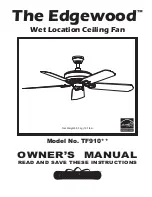
2
FIGURE 3
FAN DISENGAGED
FIGURE 2
FAN ENGAGED
The FD-L
™
fan clutch is designed for mid-range diesel engine
applications and can withstand maximum fan torque of 750
inch pounds and a fan weight not to exceed 15 pounds. It
cannot be used to replace heavy duty clutches or hubs that
do not meet the above stated specifications.
DESCRIPTION
The Bendix
®
FD-L
™
fan clutch is an air operated
thermostatically controlled clutch for the engine cooling fan.
Its purpose is to maintain engine temperature by engaging
or disengaging the cooling fan, thereby, providing better fuel
economy, greater engine efficiency, faster warm-ups and a
quieter vehicle.
The FD-L
™
fan clutch is produced in several different models
to accommodate the variety of installation requirements
resulting from the many engine, vehicle and accessory
combinations. Its fail-safe design prevents overheating in
the event of air loss for any cause.
OPERATION
GENERAL
The FD-L
™
fan clutch replaces the standard fan hubs on the
engine of mid-range diesel vehicles. It is controlled by a
temperature sensitive air valve. (See Figure 4). The same
type of valves used to control radiator shutters are used to
control the FD-L
™
fan clutch. Installed in the engine block,
the thermo-pneumatic control valve directly senses coolant
temperature. Provided coolant temperature remains below
the setting of the valve, air passes through it to disengage
the fan clutch. When coolant temperature rises to the valve
setting, the valve closes and exhausts air pressure from the
fan clutch which engages the fan.
Depending upon optional equipment installed on the vehicle
such as radiator shutters and radiator mounted air
conditioning condenser, different piping arrangements are
necessary. These will be explained in the paragraph on
control systems.
DISENGAGED
When the vehicle is started with a cold engine the thermo-
pneumatic control valve is open. As brake system air
pressure is built up, air passes through the control valve to
the fan clutch. Air enters the inlet port in the bracket of the
fan clutch and travels through the drilled passage in the
shaft to fill the piston cavity. When air in the piston cavity
reaches a pressure of 75-80 psi, the piston slides on the
shaft moving the pressure plate assembly to the disengaged
position. In this position the clutch lining is out of contact
with the fan plate and the fan is no longer driven by the
engine (see Figure 2).
ENGAGED
As the engine coolant rises in temperature, the engine
thermostat opens to circulate radiator coolant through the
engine. When the engine coolant temperature reaches the
setting of the control valve, the valve exhausts air from the
piston cavity. The fan clutch springs force the pressure
plate forward until the lining contacts the fan plate. The fan
is engaged and is driven by the engine (see Figure 3).
CONTROL SYSTEMS
The fan clutch, in addition to its primary function of operating
the fan as needed to maintain the cooling liquid within a
certain temperature range, must be coordinated with other
devices when installed on the vehicle; these are radiator
shutters and radiator mounted condenser for air
conditioning. Four basic configurations are possible as
follows:
FIGURE 4. FAN CLUTCH ONLY
FIGURE 5. FAN CLUTCH WITH SHUTTERS
FIGURE 6. FAN CLUTCH WITH RADIATOR MOUNTED
CONDITIONING CONDENSER
FIGURE 7. FAN CLUTCH, SHUTTERS AND CONDENSER
PISTON MOVES
FORWARD AS AIR IS
EXHAUSTED


























